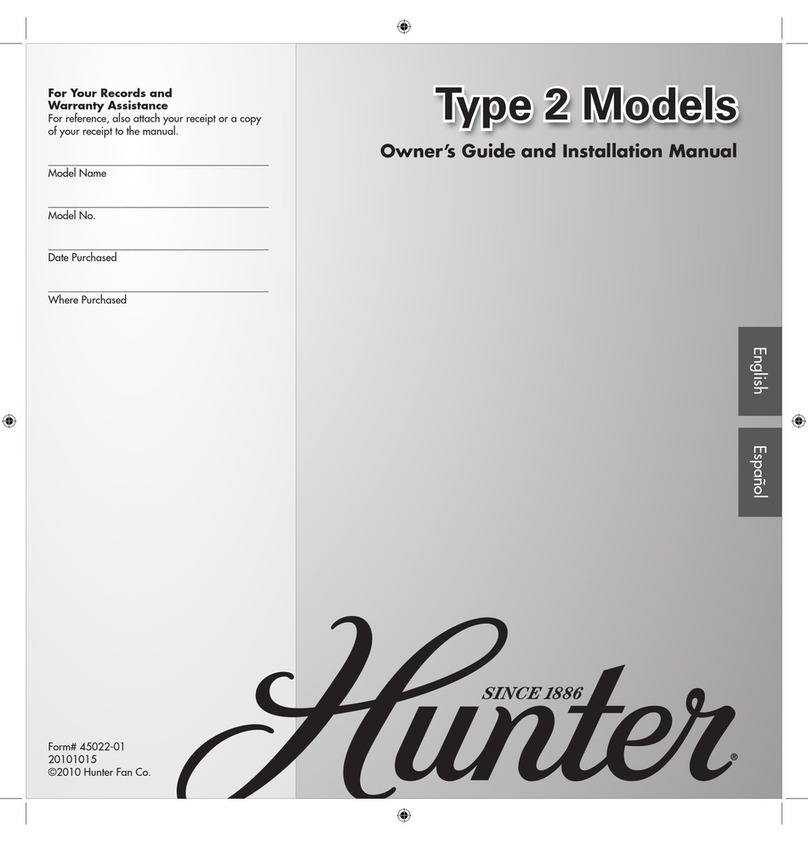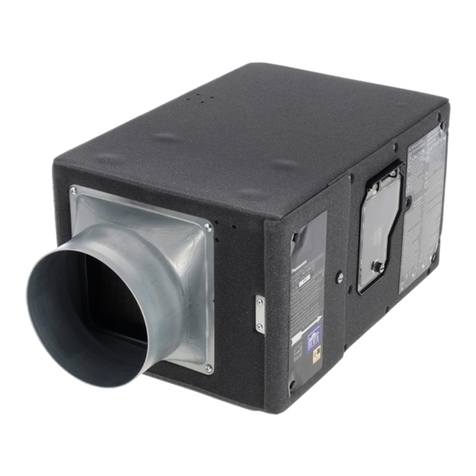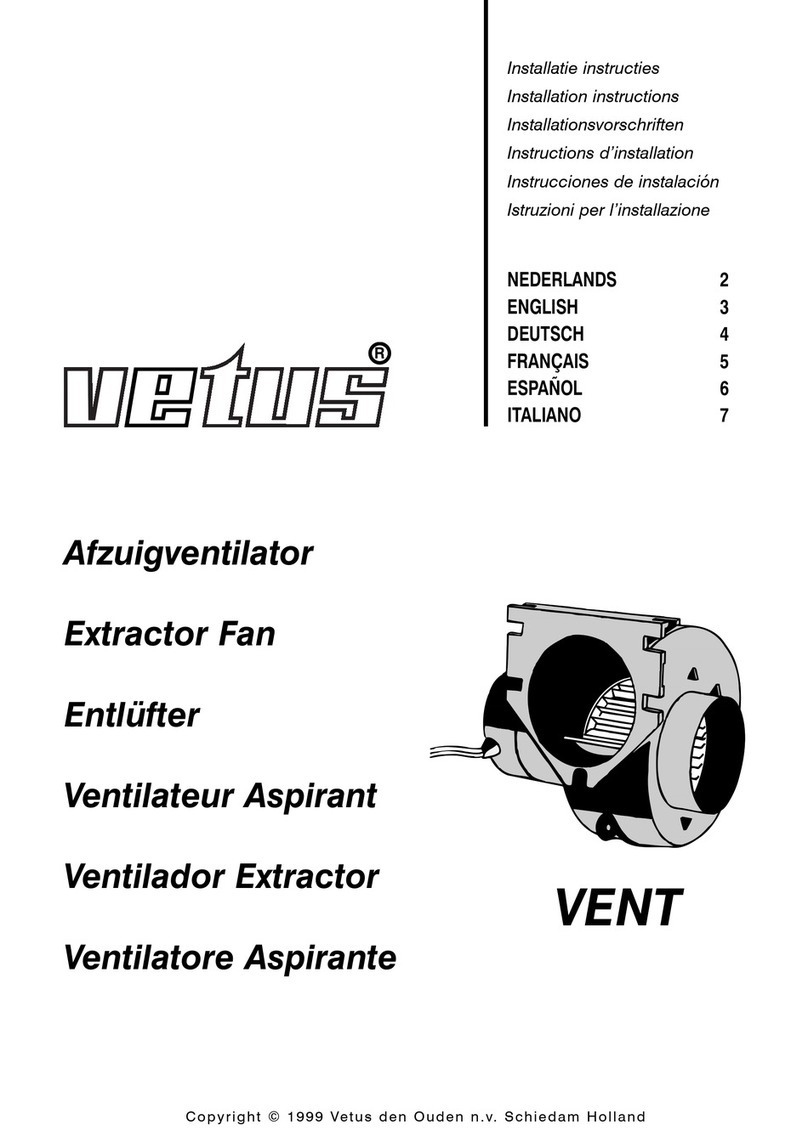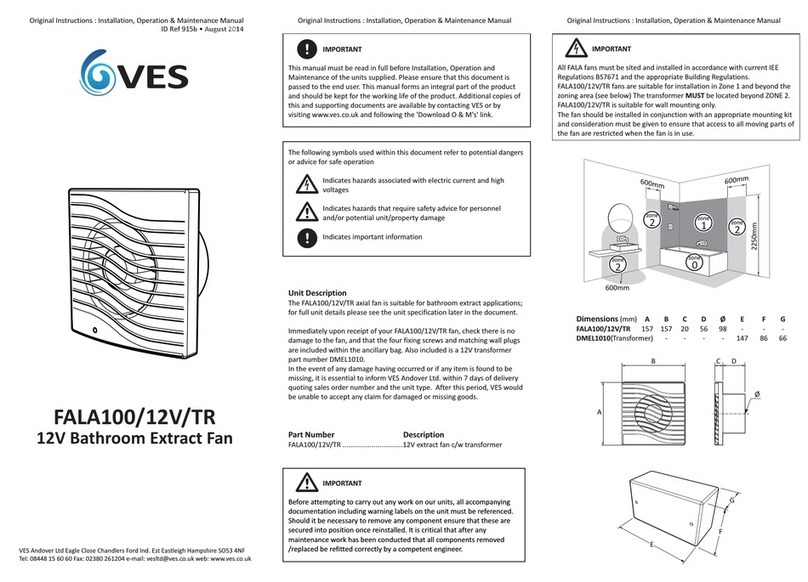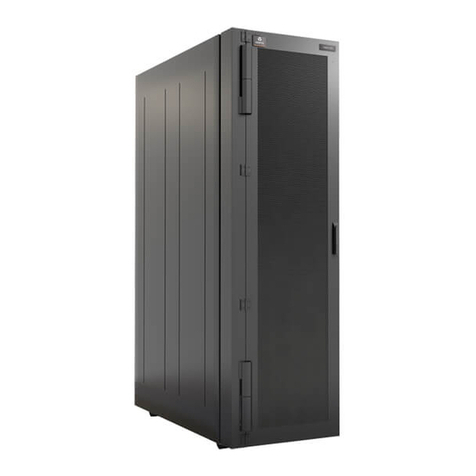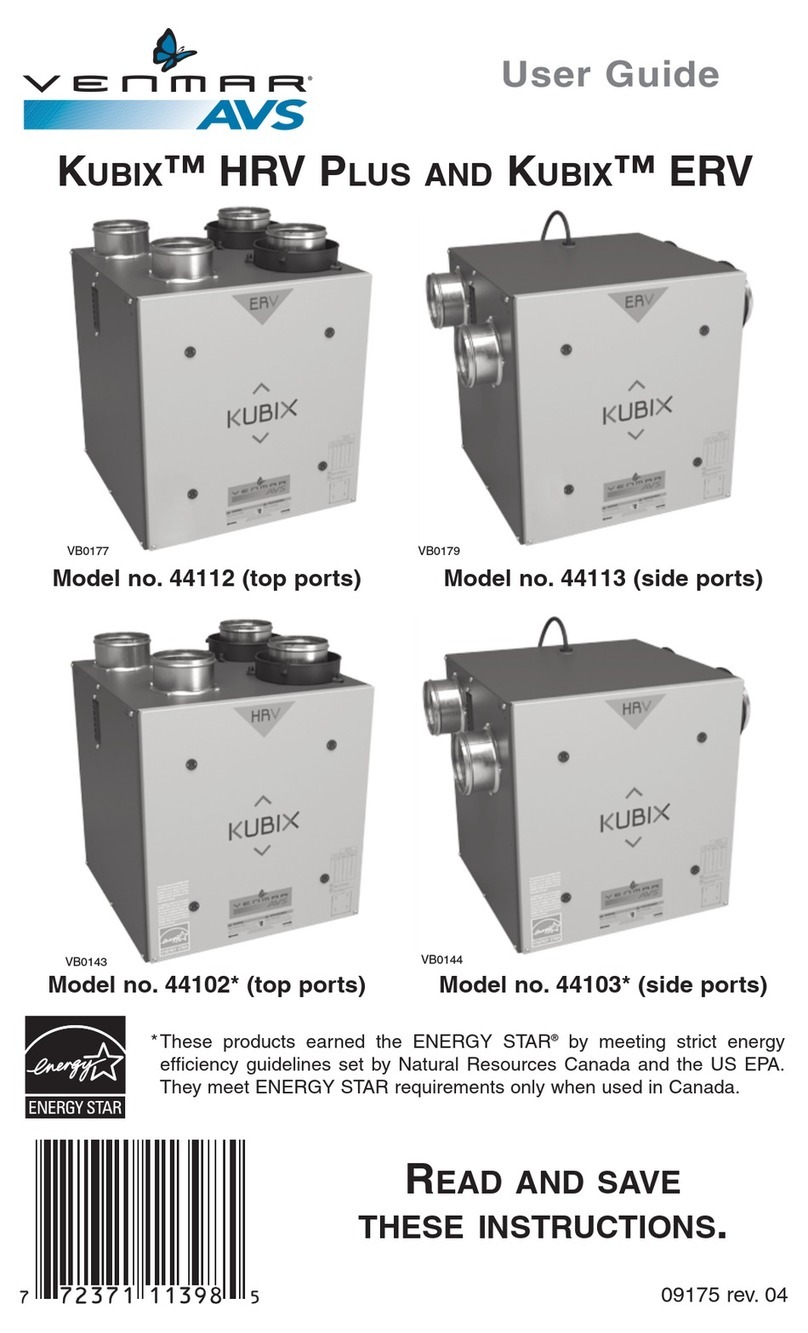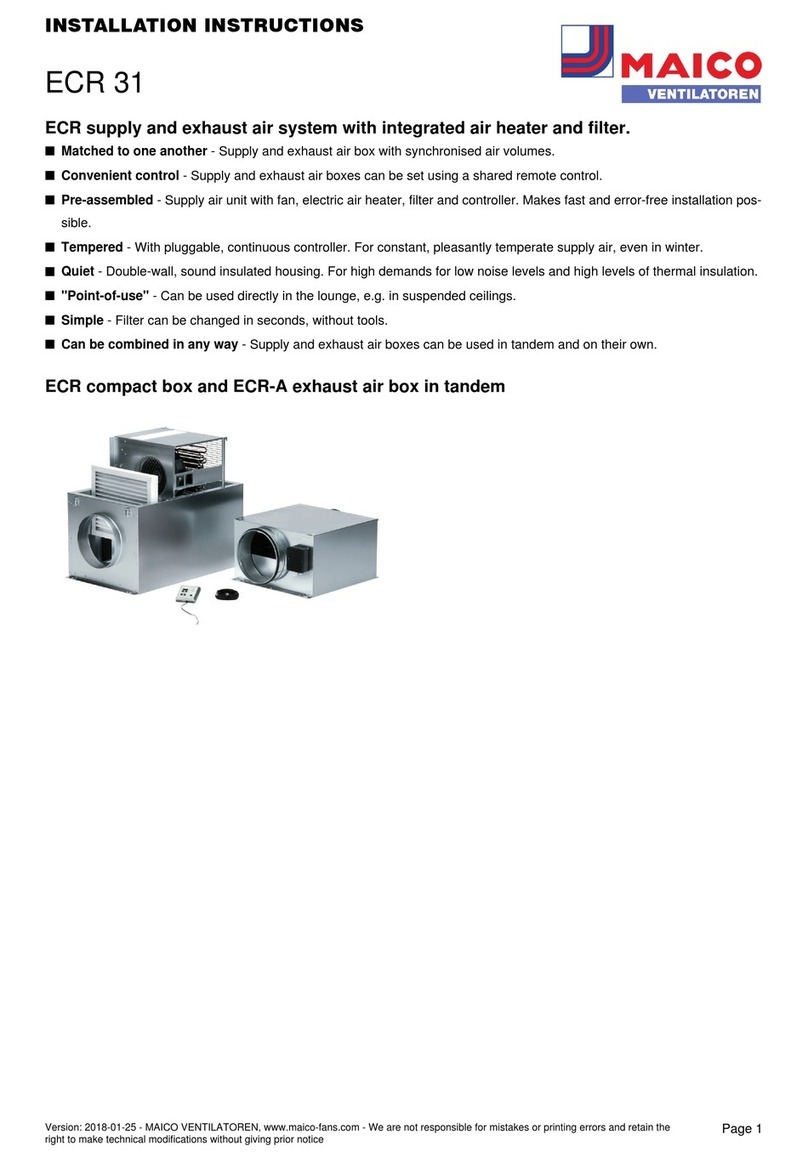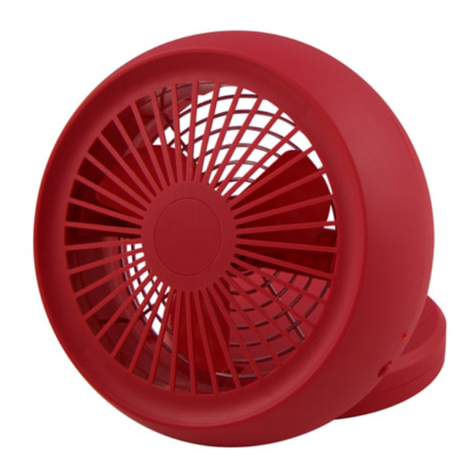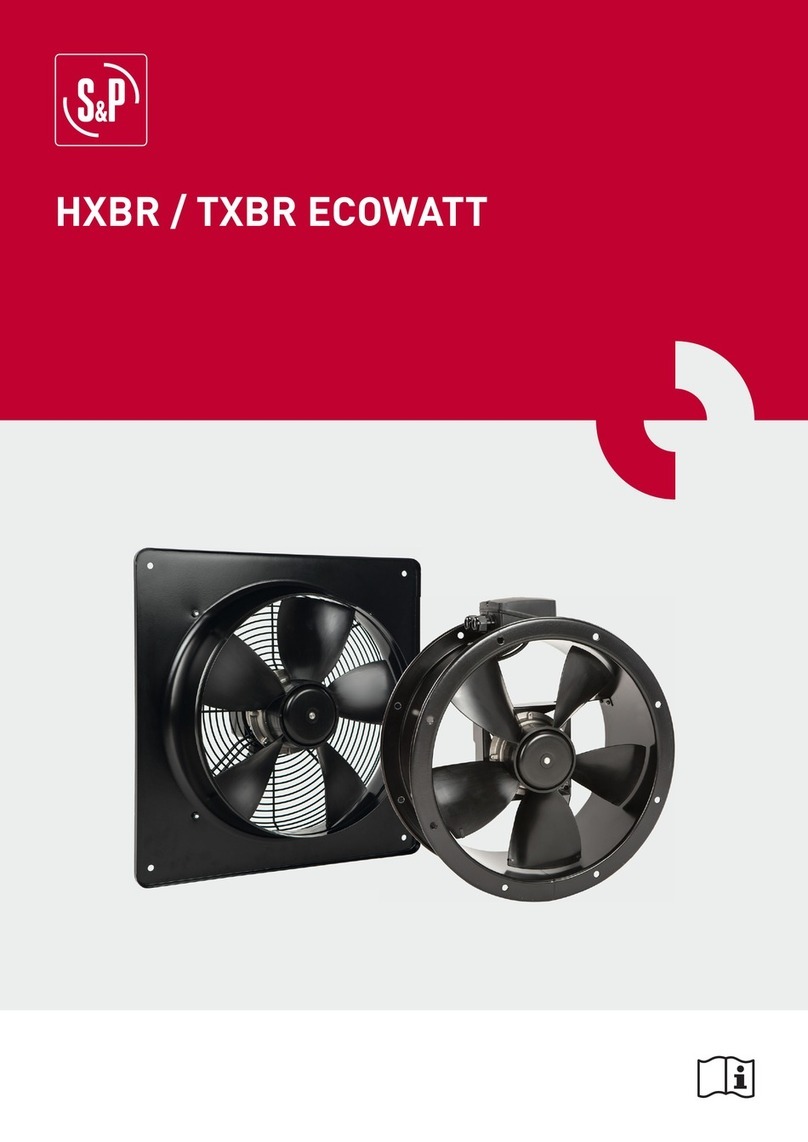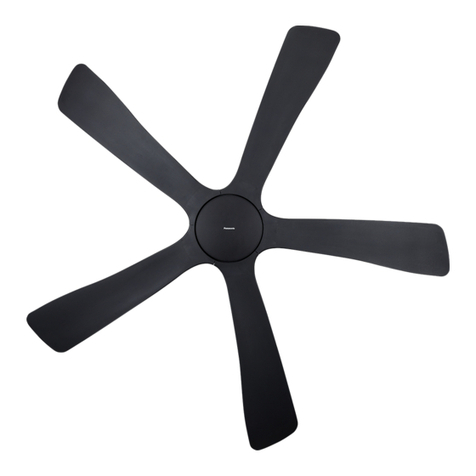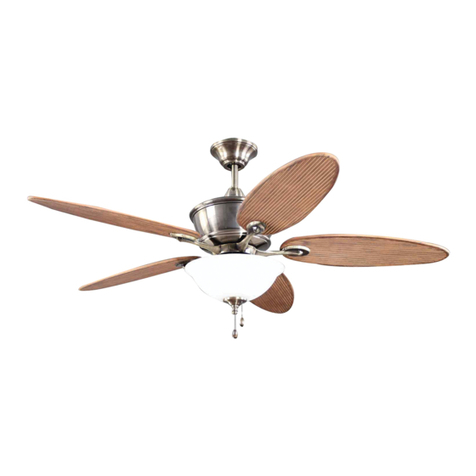
6080105.02 vetus® Extractor fan type VENT_A
1 Introducción
El ventilador extractor VETUS modelo VENT_A ha sido construido para la
ventilación de la sala de máquinas, el espacio de aseo o la cocina.
ADVERTENCIA
Para prevenir lesiones personales siempre han de estar desconectadas
las conexiones eléctricas durante la instalación y el mantenimiento.
No usar el ventilador en un espacio con una temperatura ambiente su-
perior a 70ºC.
TENGA CUIDADO
Desaconsejamos el uso de este extractor para alimentar de aire el motor
de la embarcación, puesto que todo motor, siempre que sus oricios de
ventilación sean sucientemente grandes, tiene la capacidad necesaria
para aspirar él mismo el aire que precisa. Con el ventilador instalado en el
conducto de alimentación de aire del motor de la embarcación, el elec-
tromotor del ventilador incluso se pudiera calentar excesivamente, por-
que la succión natural del motor de la embarcación provoca un número
excesivo de revoluciones de la hélice del ventilador.
2 Instrucciones de funcionamiento
Antes de arrancar el motor es preciso activar el ventilador durante al
menos 4 minutos y controlar la presencia de eventuales vapores en el
recinto.
ADVERTENCIA
No activar nunca el ventilador al repostar combustible.
3 Recomendaciones de instalación
El extractor se puede emplear en diversas situaciones distintas.
3.1 Ejemplo 1
En esta situación el motor de la embarcación NO aspira por separado
su aire de combustión. La sala de máquinas sólo se puede ventilar por
medio del extractor con el motor de la embarcación parado. Véase el cro-
quis 1.
3.2 Ejemplo 2
En esta situación el motor de la embarcación aspira por separado su aire
de combustión (a través de una rejilla con cuerpo aspirador de aire). El
extractor se emplea para extraer aire calentado de la sala de máquinas, lo
cual es posible tanto con el motor parado como con el motor en marcha.
Véase el croquis 2.
3.3 Atención
Asegurar que haya siempre una(s) apertura(s) de ventilación lo su-
cientemente grande(s) así como una suciente capacidad del/de los
extractor(es). Una elección incorrecta de las aperturas de ventilación y
de extractores pueden llegar a resultar en un funcionamiento inferior del
motor de la embarcación. Consultar siempre las instrucciones de incor-
poración del proveedor del motor de la embarcación.
En caso de un motor de GASÓLEO es preferible alimentar el aire por la
parte baja de la sala de máquinas y extraerlo en el punto más alto posi-
ble.
En caso de un motor de GASOLINA es preciso alimentar el aire por la
parte alta de la sala de máquinas y extraerlo lo más bajo posible, don-
de con mayor probabilidad se pudieran producir vapores. Dicho punto
siempre ha de estar por debajo de la parte superior del pie del motor. No
obstante, tampoco puede ubicarse tan bajo el oricio de manguera que
el ventilador pudiera aspirar agua de sentina en la manguera.
4 Instalación
Montar el ventilador en un tabique o suelo, a una altura sucien-
temente por encima del nivel del agua de sentina, en un lugar sin
salpicaduras de agua, chorros de agua o agua de limpieza de la
cubierta.
Determinar el lugar de los oricios de montaje, usando para ello
como plantilla el ventilador. Taladrar oricios para tornillos de 4,8
mm (nr. 10). Fijar el ventilador por medio de tornillos de acero
inoxidable. Apretar con cuidado los tornillos observando un pun-
to igual. No apretarlos demasiado para evitar grietas en los pies
de montaje.
4.1 Manguera de ventilación
Aplicar una manguera de ventilación de un diámetro interior de
ø 76 mm (3”), que cumpla los siguientes requisitos:
- interior liso
- resistente como mínimo a una temperatura de 70ºC
- a prueba de agua, aceite y combustible
- resistente a presión mínima y sobrepresión
Mantener la manguera lo más corta posible, minimizando los re-
codos y observando el mayor radio posible de los mismos.
Montar la manguera en la conexión, girándola. Sujetar la man-
guera de ventilación con abrazaderas de manguera de acero
inoxidable.
ADVERTENCIA
Instalar una rejilla sobre la boca de aspiración si el lado de aspi-
ración del extractor no va provisto de una manguera de venti-
lación. Así se evita el contacto con la hélice en funcionamiento.
4.2 Conexión eléctrica
Asegurar que el voltaje de a bordo coincide con el voltaje de co-
nexión indicado en el ventilador.
Conectar el ventilador de acuerdo con el esquema, véase croquis
3. Si fuera necesario, alargar los hilos de conexión. El diámetro
mínimo del hilo será de 2,5 mm2. Instalar en el hilo positivo un
fusible de 12 A (con 12 V) o de 6 A (con 24 V).
5 Especicaciones técnicas
Motor : 12 V — 24 V corriente continua
Número de revoluciones : 4.800 rev/min
Amperaje : máx. 8 A con 12 V; 4 A con 24 V
El motor está provisto de una ‘protección ignición’, ISO8846
Capacidad : máx. 4 m3/mín con 13,6 V
Conexión de manguera : ø 76 mm (3”)
Peso : 1,2 kg
Temperatura ambiente : máx. 70ºC
1,0 2,0 3,01,5 2,5 3,5
60
50
40
30
20
10
0Capacidad
[m3/min]
Presión estática [mm H2O]
a 12 V
ESPAÑOL

